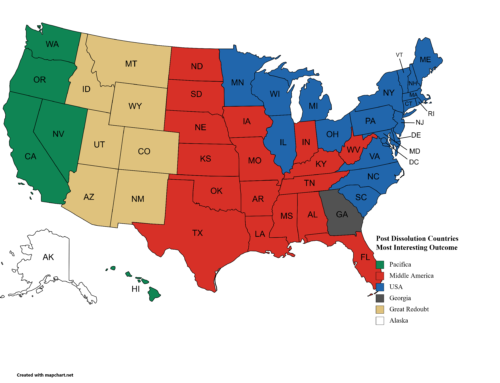Well, if there is a subject many of us didn’t think would be at the forefront of popular culture at the beginning of this year it certainly would have to be truth.
There’s no question that the political culture has that word at the center of discussion as does the media. But it isn’t only there. Increasingly there are social media discussions centered on creating your own truth and whether or not truth is malleable. This trend in discussing, debating, and sometimes shouting about truth has real implications not only for media and political elites, but also for business and government leaders as well.
I’ve said for years that truth doesn’t change based on the rank of the recipient. I’ve also said that truth isn’t good or bad; it just is. So how does the current popular discussion of truth impact business and government leaders if Truth just is?
Lots of people like to drop seemingly interesting truths or uncomfortable facts. The trap is arguing that the facts can’t possibly be true. Instead, I always ask: What’s your point? Nobody posits a fact without some underlying meaning behind why they say it. The fact alone is only passingly interesting. The important question regards the persons motive for stating that particular fact.
The distinction comes down not to the facts themselves, but in the interpretation of the meaning of the facts. That’s where people create their wiggle room. That is where innovators create the space for breakthrough products and processes. That’s also where those bent on evil can convince themselves they’re doing something noble instead.
Lets look at some examples and what we can learn from them. First, lets look at the example of Spanish Conquistadors and the Aztecs of Tenochtitlan. It is a fact that the Conquistadors defeated the Aztecs precipitating the downfall of that civilization. It has been widely interpreted as a first world massacre of native peoples. But that is an interpretation of the fact. From the Spanish viewpoint, the widespread practice of human sacrifice, not just the existence, but on such a grand scale (the Aztecs are said to have sacrificed well over 10,000 people prior to their defeat), was in Barbara Ehrenrich’s words, “profoundly disturbing.” From their point of view, this was a practice that had to be stopped even at the cost of defeating a people and their way of life.
That is one interpretation of the fact of the human sacrifice. The other, from the point of view of the Aztecs, was, in Ehrenreich’s words, “the highest form of piety, serving to keep the universe functioning in an orderly and predictable manner.” So neither the Aztecs nor the Spanish questioned whether there was human sacrifice going on. The interpretation of the implication of that fact is what differed, so much so that one side was willing to fight against great odds with a few hundred men and swords and a few cannons against tens of thousands of native men in a heavily defended city. The implications of the outcome of that battle are still debated today, but at the time, the implications resulted int he fall of one civilization and the willingness of another to conquer two continents. These facts are not good or bad in themselves. The interpretation of the implication of those facts remains up for discussion.
Modern day demographic data can likewise be used in many ways. Some corporations target particular demographic groups as likely consumers of their products. That fact that certain foods cost less than others in the same category is not questionable. But the implications of that truth and its interpretation causes heated debate between industry leaders and lobbyists and advocates for those demographics. One side will say that they are providing inexpensive food and nutrition for low-income people. The other side will say that the industry is taking advantage of those who can afford nothing better by loading those inexpensive foods with lower quality products and chemicals that are not found in the food that wealthier people can afford to buy. The facts alone aren’t good or evil. But we will never reach an agreement on whether or not implication of those facts is good.
In many communities across the US, there are people in need who cannot receive assistance monies for rent and food when monies are available. The facts that people are in need and that monies go unspent are not in question. The interpretations could not be further apart. On the one hand, you have government agencies who place specific requirements on local communities and non-profits who would disburse that money that are so cumbersome that many of the communities say the little they would receive isn’t worth the time and cost of filing the paperwork. So on the one hand you have a group of people that say, “See? The poverty problem can’t be that bad in these communities since they don’t even ask for the money.” On the other hand, the communities often say, “If the government really cared about these poor, they’d make it easier to actually help them with the money that is budgeted for just that cause.” Unquestionable facts. Different interpretations.
And how about military spending…It is an incontrovertible truth that military spending programs very often go far over budget in return for capabilities that far under perform the expected requirement. But over the years, each side in procurement process (the developers and the end users) adds so many steps and so many changes and reviews that by the time the products are fielded, they are either far fewer in number than required, they under perform, or are not necessary any longer because the world has moved on to another problem set. The developers make their money every time a step in the process is completed or reaccomplished, so it is int heir best interests to allow the end user to change the requirements as often as they want to. And the end user is so often caught up in adding the very latest capability, that they demand something many times the size, weight and cost of what they originally said they needed. And the secrecy of the programs means that monies being spent on the same widget on multiple programs cannot be saved since they don’t all know they need the same widget. And you don’t expect the developer to tell them, do you?
So what does this mean to you as a business or government leader?
Especially in today’s news and social media environment, be careful when talking about facts and truth. Be sure you are differentiating between truth and its implications. And realize that if you are discussing interpretations of the meaning of a truth, you ought to consider what someone with a different interpretation would say.
When the US Air Force began the process of developing and building it Advanced Tactical Fighter, the Cold War was raging and there was no end in sight. We knew we’d need a stealthy fighter capable of shooting down new Soviet jets. But by the time the F-22 reached the field, the cold war was over and there were no comparable jets to shoot down. That was a fact. So one group of people said we shouldn’t build them at all or didn’t need hardly any. Another group said that there would certainly rise another power that would present a threat during this jet’s lifetime. Some even considered sending them provocatively near certain countries to prove their worth.
My point here is that while facts are not malleable, interpretations are and you need to be ready for varying interpretations as a leader. You have to consider alternative possibilities to what your interpretations of the facts are so that you can answer the “what if” questions. And when someone who works for you or seeks your influence gives you a fact such as “those guys just aren’t as smart as us,” fire back without hesitation asking what is his point. Why is he bringing up that fact. Only then can you get to the meat of the conversation and your real opportunity for leadership.
Keep thinking…






Leave A Comment